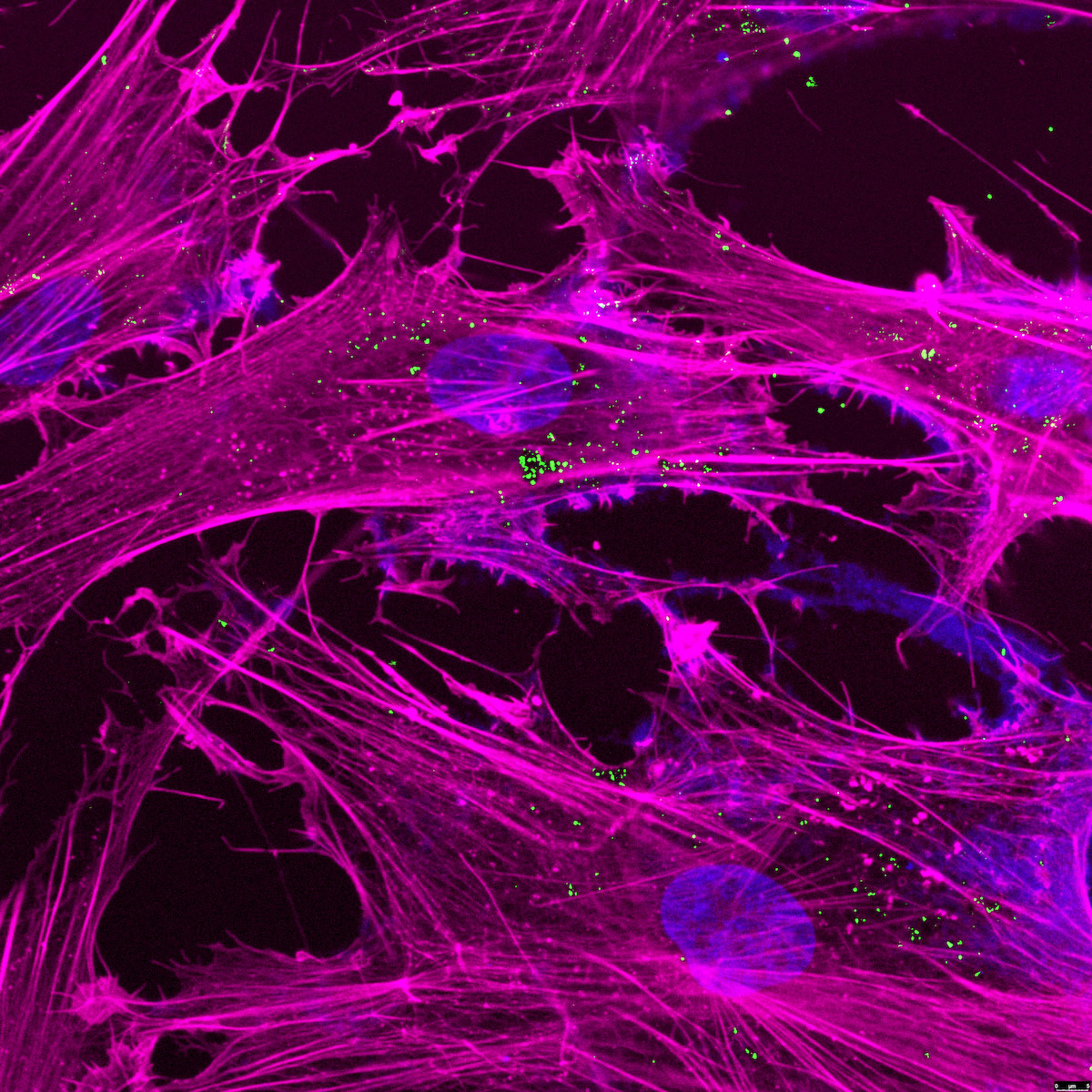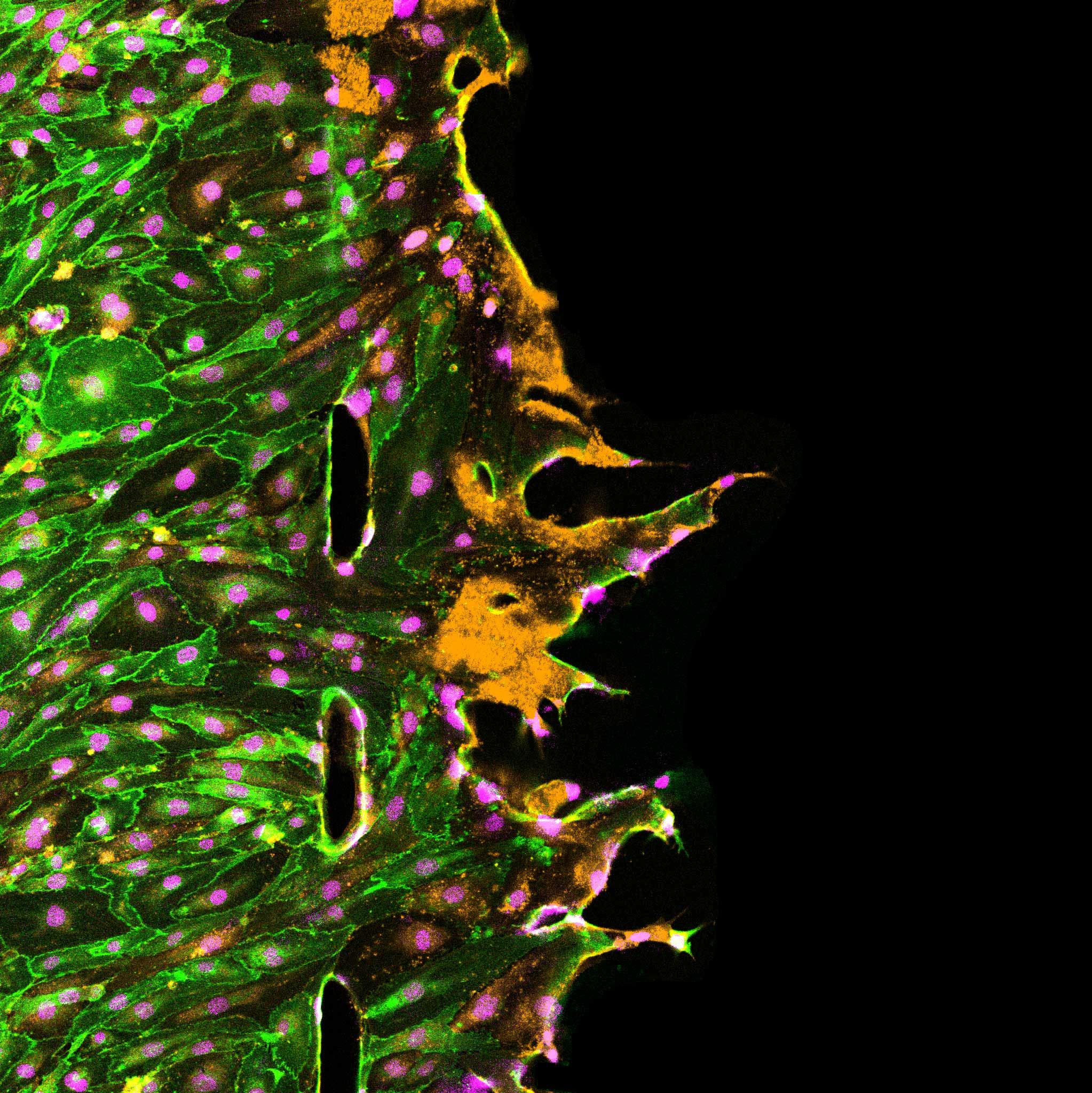Having an artistic perspective and working in engineering can produce some of the most efficient and unique designs. It allows engineers to not only consider data and facts but also how to implement those facts fluidly and efficiently.
Art and engineering collided in the third annual Artistic Engineering Contest, held annually by the Department of Biomedical Engineering at Texas A&M University. Initiated in 2020, the contest serves as a platform for students, faculty and staff to demonstrate how they see beauty in science and engineering.
Art submissions were reviewed and ranked by faculty, staff and students, who selected four winning art pieces that will be displayed near the departmental front office.
Undergraduate junior Aaliyah Fisher won first place with her piece, “The Creation of Atom,” just a year after placing fifth in the 2022 Artistic Engineering contest with her piece, “The Medicine of Technology.”
Fisher has been sketching and working in multiple art mediums since childhood and sees her artistic ability as a strength in biomedical engineering.
“The beauty of engineering resides in the details of the subject,” she said. “Having an artistic perspective and working in engineering can produce some of the most efficient and unique designs. It allows engineers to not only consider data and facts but also how to implement those facts fluidly and efficiently.”
Descriptions for the top four art pieces are listed below.
First place: “The Creation of Atom” by Aaliyah Fisher

“The Creation of Atom” was inspired by the motivation and desire to bridge the gap between human physiology and modern technology. The piece symbolizes the precipice that technological advancements have set us on in mimicking the electrophysiology of a natural human. Though this technology has not been refined yet, the artist believes it is not too far off in the future and is ecstatic to be part of its storyline.
Second place: “Nanoparticles Internalised by Human Mesenchymal Stem Cells” by Kanwar Abhay Singh

Nanomedicine and nanoscale therapeutics have emerged as key areas of biomedical research in recent years. The therapeutic efficacy of nanoparticle-based therapies depends on the target cell’s internalization and localization of the nanoparticles. Here, Molybdenum disulfide nanoparticles are taken up by human mesenchymal stem cells to stimulate mitochondrial biogenesis. The nanoparticles (green) are localized within the cytoplasm of the cell (cellular cytoskeleton is stained purple) and not near the nucleus (blue). The location of the nanoparticles within the cytosolic space provides insight into the molecular mechanism by which the nanoparticles exert their effect on cellular function.
Third place: “The Modern Alchemist” by Ankit Kumar

Biomedical engineers are the alchemists of our age, weaving together the threads of science and technology to conjure life-saving miracles. In this AI-crafted art, the wizard stands as a metaphor for their transformative prowess. Hovering over one hand are glowing molecules and chemical bottles—representing the depth of scientific inquiry. The other hand grasps a hammer with gears in the foreground, symbols of technological ingenuity. Across from the alchemist, a heart rests on a book, itself supported by strands of DNA. This arrangement embodies life as an intricate narrative written in genetic code. It is a tribute to the harmonious union that sustains human life.
Fourth place: “Patient Vascularized Cancer Chip” by Lopamudra Das Ghosh
